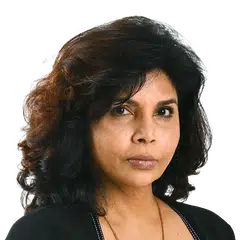Places Of The Heart: East Coast enclave inspires designer C.Y. Tung
Sign up now: Get ST's newsletters delivered to your inbox
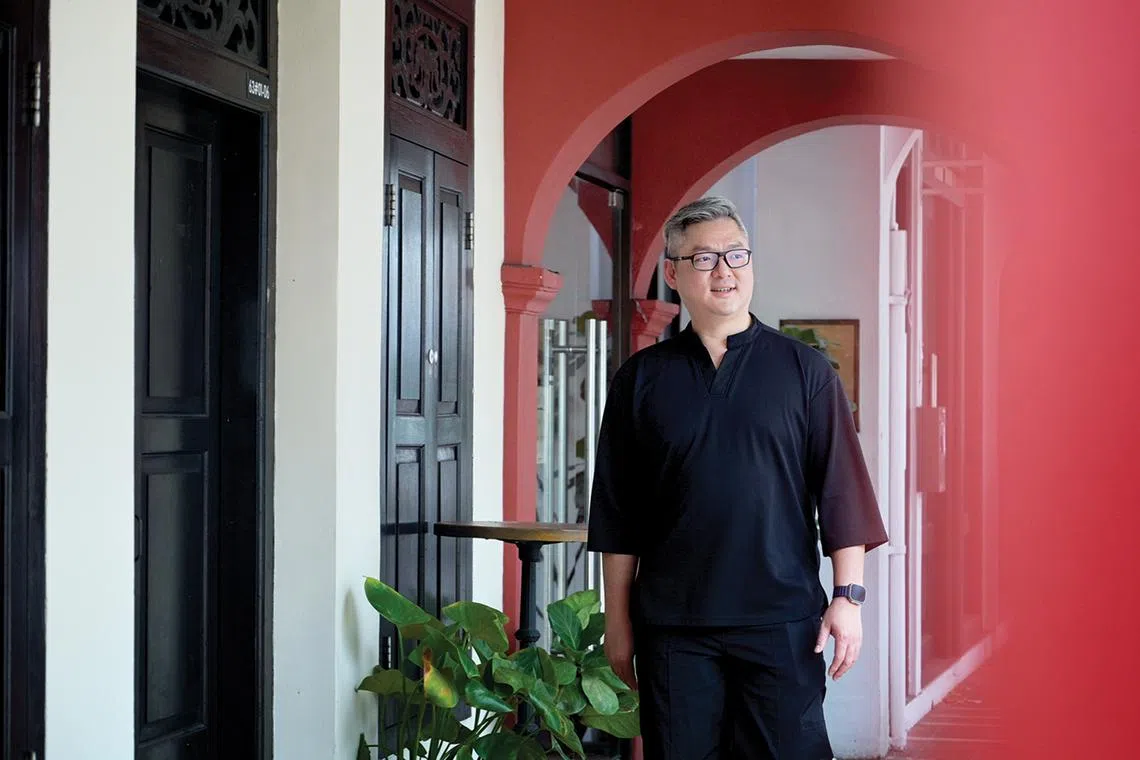
Mr Tung Ching Yew at The Red House in East Coast Road, one of the landmarks of the area.
PHOTO: HARPI PHOTOGRAPHY
Follow topic:
Who: Mr Tung Ching Yew, 48, also known as C.Y. Tung, is the president of the Society of Interior Designers (Singapore). He is also the founder and managing director of award-winning spatial design firm Spirit Of Design Analogy (Soda). Founded in 2010, Soda has completed more than 350 projects across the United States, China and South-east Asia. Mr Tung’s numerous accolades include gold prizes at the French Design Awards in 2024 and the Singapore Interior Design Awards in 2019. He is married with two children. Mr Tung is also an accomplished singer-songwriter and received a National Arts Council grant for pursuing his passion in music in 2015. He continues to write music after hours.
“I am always drawn to my childhood haunt, which is not a single place but an enclave, spanning Katong, East Coast, Joo Chiat and Marine Parade.
Although I now live in Bishan, the places where I grew up have a special hold on me, as they are imbued with a rich blend of personal memories and cultural heritage.
Walking through these streets, I am often reminded of the simple joys of my youth – strolling home from Fowlie Primary School in the 1980s, visiting familiar shops and making friends in the neighbourhood.
The school later merged with Haig Boys’ Primary School and Mountbatten Primary School in 2001, and was renamed Tanjong Katong Primary School.
These sepia-tinged memories create a deep sense of nostalgia, making the area feel like an extension of myself.

Pre-war Peranakan terraced houses in Katong.
PHOTO: ST FILE
The Peranakan shophouses there, with their intricate designs and vibrant colours, are more than just architectural landmarks. They represent a unique blend of Chinese, Malay and European influences that mirror the multicultural fabric of Singapore.
Another highlight is the abundance of small businesses.
The shops are not just places to buy and sell goods, but also community hubs where shop owners and customers build intimate, long-lasting relationships.
It’s common to see people slow down and linger while shopping, laughing and catching up with the latest ‘village news’.

Mr Tung Ching Yew outside the former Joo Chiat Police Station.
PHOTO: HARPI PHOTOGRAPHY
The sense of community and personal interaction is something I find deeply heartwarming. This is becoming increasingly rare in our fast-paced, shop-till-you-drop world.
Another big draw are the streetscapes along East Coast Road and Joo Chiat Road. They have retained their old-world charm as a showcase of architectural heritage, with landmarks such as the Koon Seng Road suburban shophouses, the former Joo Chiat Police Station and The Red House.
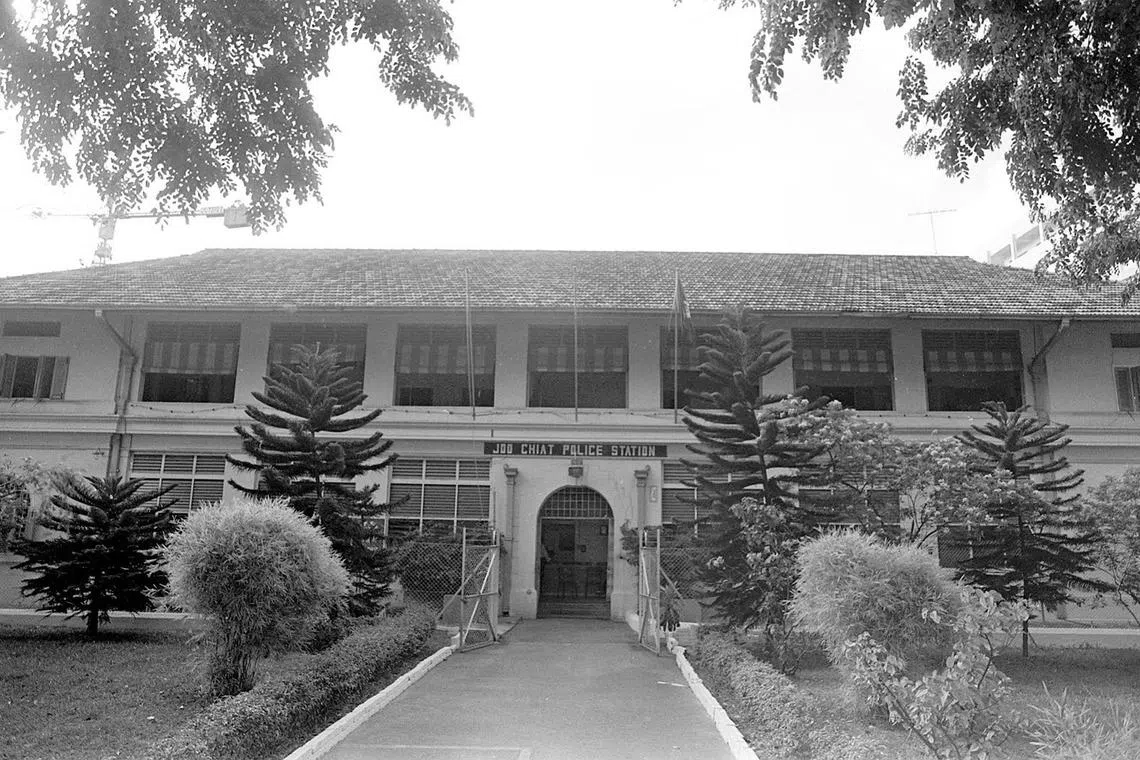
The former Joo Chiat Police Station.
PHOTO: ST FILE
Their romantic forms are one of the reasons I pursued a career in spatial design, and each time I visit the area, I get fresh ideas.
As one walks through the streets, the pedestrian perspective is heightened by rows of ornate Peranakan shophouses built in the 1920s and 1930s. These colonial-era buildings are well-preserved with their Baroque facades, yet seem to weather the relentless march of time.
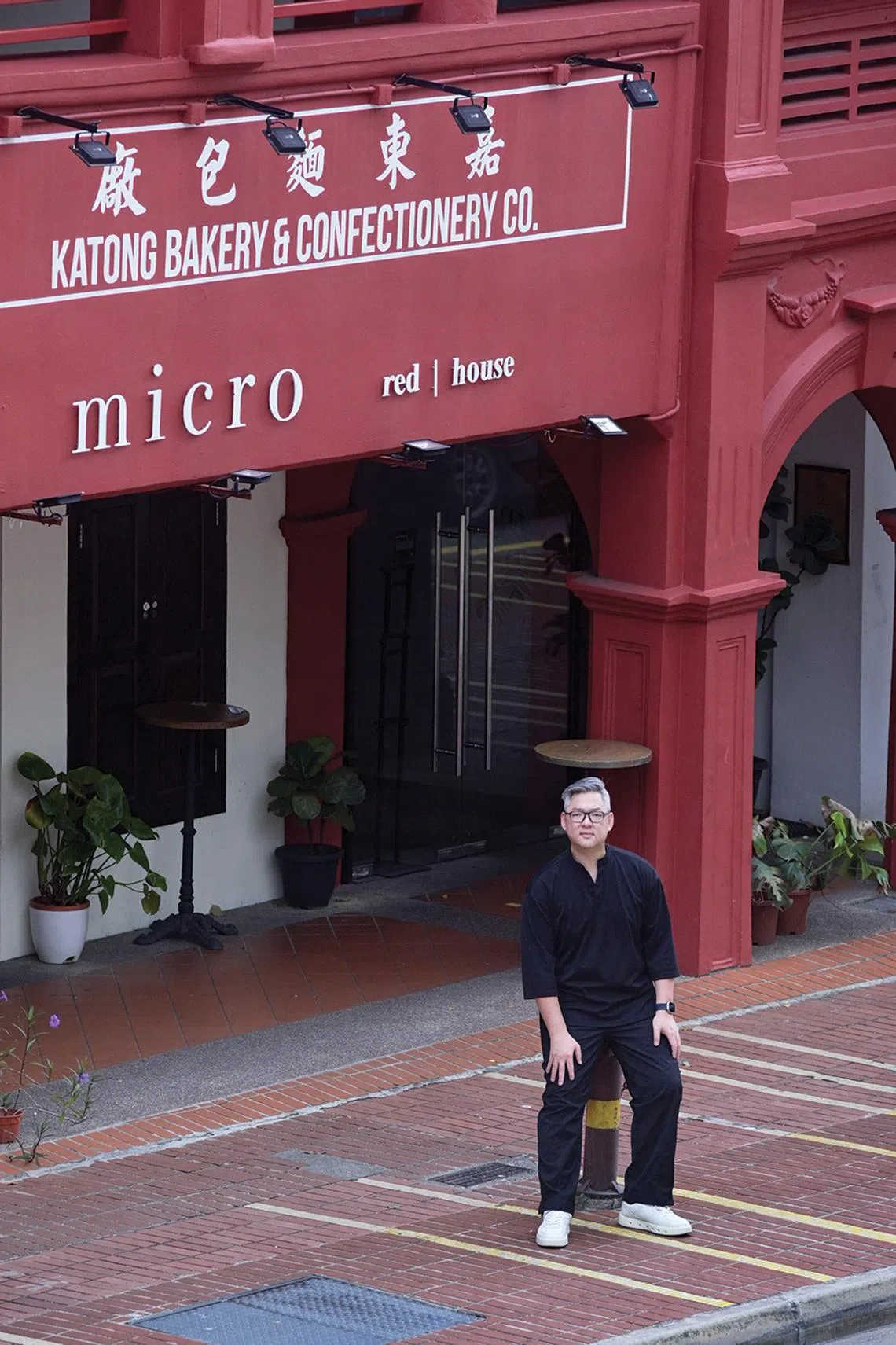
Mr Tung Ching Yew at The Red House in East Coast Road, one of the landmarks of the area.
PHOTO: HARPI PHOTOGRAPHY
The eclectic architecture of the enclave includes commercial buildings built between the 1970s and 1990s, such as Katong Shopping Centre and Katong Plaza, which have a more modernist, pared-down aesthetic.
These buildings may not be as flashy, but they are markers of the zeitgeist of the 1970s, especially the music that defined the era such as rock, funk and R&B (rhythm and blues).
When I step back and look at the enclave as a whole, it is a tapestry of old and new, tradition and modernity, where I feel deeply connected to my roots.
And when it comes to making music, I need solitude. The absence of distractions helps me produce melodies that tug at the heartstrings and are seared into one’s memory.
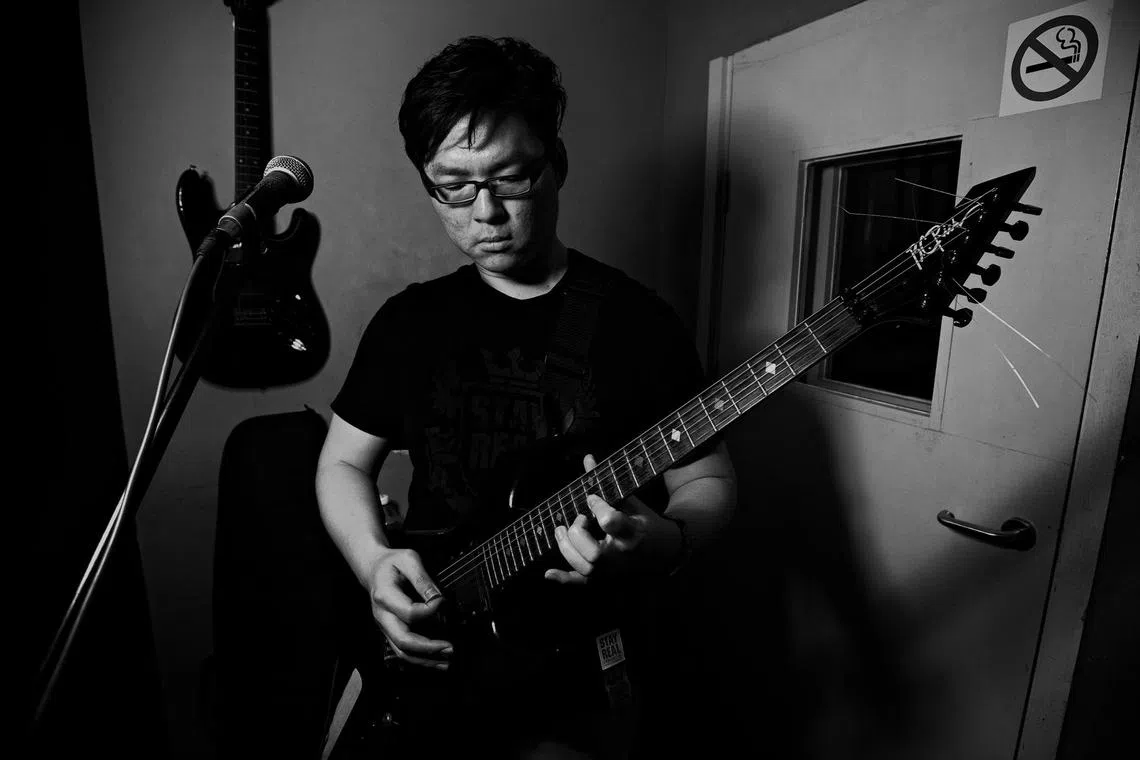
A 2012 photo of Mr Tung Ching Yew recording an original composition in the studio.
PHOTO: LOO LEE CHUAN
East Coast Park has the laid-back vibe that I need to write music.
On weekends, the morning sun reflected on the surging waves reminds me of a tempest of emotions, similar to the feelings I had as a teenager.
The evening sunset fills my mind with ideas for a few tentative strains of music, which I later flesh out with my collaborators into a more definitive composition for a ballad.
The enclave embodies my past, my cultural identity and my values. It is a sanctuary where I can reconnect with myself, find inspiration and feel a profound sense of belonging. This emotional bond makes it not only a space I revisit, but also a place integral to who I am.”

